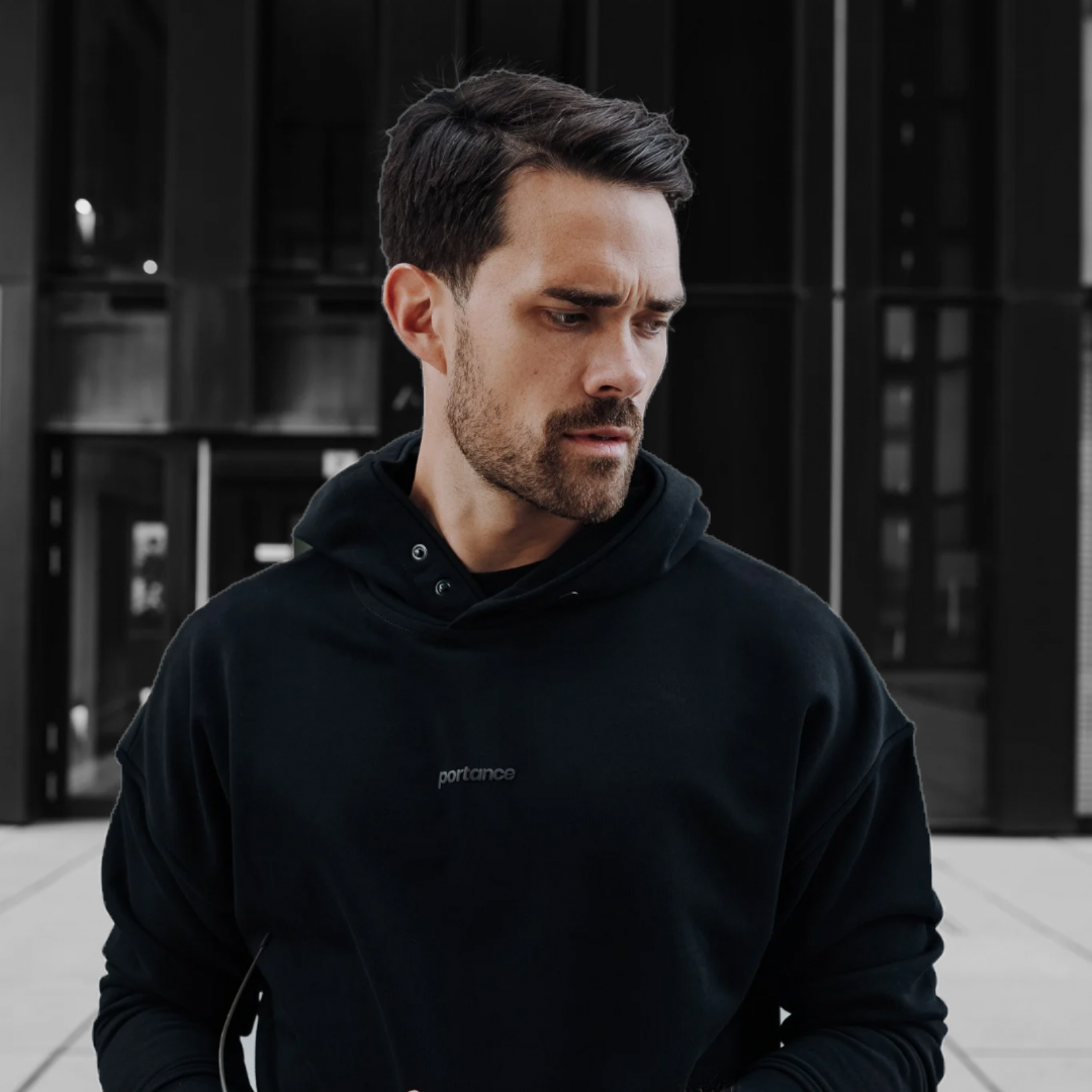Dieser Artikel richtet sich an dich, wenn du wissen möchtest, warum du in deiner Komfortzone verharrst und wie du deinen eigenen individuellen Fahrplan aufbauen kannst, um sie zu verlassen.
Am Ende dieses Artikels wirst du das Bewusstsein und die Bereitschaft haben, gezielt an deiner Komfortzone zu arbeiten, um deine eigenen Grenzen zu überwinden und Leichtigkeit zu erlangen. Julias 3-Schritte-Plan wird dich dabei unterstützen.
Warum wir in unserer Komfortzone verharren und warum wir heraustreten sollten
Die Komfortzone ist kein physischer Ort, sondern ein mentaler Zustand, in dem wir uns auf der Ebene unserer Gewohnheiten befinden. In unserer Komfortzone tun wir Dinge, die wir bereits kennen und die uns keine große Anstrengung abverlangen. Hier machen wir keine negativen Erfahrungen und fühlen uns sicher und vertraut. Wir verharren oftmals in unserer Komfortzone, weil sie uns ein Gefühl von „Es ist doch alles okay so wie es ist“ vermittelt. Das menschliche Gehirn ist darauf programmiert, Risiken zu vermeiden, um zu überleben. Deswegen findet es die Komfortzone auf den ersten Blick besonders attraktiv.
Doch das Verlassen der Komfortzone ist wichtig, weil es der Schlüssel zum persönlichen Wachstum und zur Entfaltung unseres vollen Potenzials ist. Neue Erfahrungen, Herausforderungen und Risiken sind Teil des Weges. Hinter der Komfortzone erwarten uns Möglichkeiten zur Selbstverbesserung, zur Erweiterung unseres Horizonts und zur Entdeckung neuer Fähigkeiten.

Ich erlebe es sehr oft, dass Menschen der festen Überzeugung sind, dass etwas nicht geht. Sicherlich liegt es daran, weil sie es noch nie probiert haben. Das kann eine persönliche Aussprache mit einem bedeutenden Menschen sein, das kann der Wunsch nach flexiblem Arbeiten in einem fernen Land sein, das kann eine Gehaltsverhandlung mit dem Vorgesetzten sein oder eine gesunde Balance zwischen Beruf und Privatleben zu finden. Findest du dich wieder? Wenn ja, dann lies den ersten Abschnitt noch einmal und du wirst deine Komfortzone ein bisschen besser nachvollziehen können.
Von Komfortzone bis Wachstumszone – die vier Phasen
In diesem Diagramm siehst du die vollständige Entwicklung, die wir gehen, wenn wir die Komfortzone verlassen. Es wäre doch zu einfach, wenn direkt alles Sinn macht und wir von jetzt auf gleich in den Flow-Zustand gelangen könnten.

Quelle: Julia C. Wöllner, Auszug aus dem Programm Mountain Mindset by Julia C. Wöllner
Die Komfortzone
Wie schon gesagt, ist die Komfortzone eine absolute Bequemlichkeitszone – es gibt kein Risiko, wir stagnieren in Bezug auf unser konkretes Thema, wir fühlen uns sicher. Das „Gefährliche“ ist, wir erkennen es oftmals nicht. Wir wissen gar nicht, dass wir in einem Momentum voller Sicherheit verharren und von emotionaler- und mentaler Freiheit Meilensteine weit entfernt sind. Genau deswegen liest du gerade diesen Beitrag – um dich selbst zu reflektieren und zu erkennen, wo du in deiner Komfortzone verharrst. Dass du dies gerade machst, ist der erste- und ein unglaublich wichtiger Schritt in diesem Prozess.
Die Angstzone
Wenn wir also Bewusstsein in die Situation gebracht haben und wissen, dass es diese bestimmte Komfortzone gibt, fangen wir an, uns damit zu beschäftigen, was kommt, wenn wir aus dieser Zone heraustreten. Wir gelangen in die Angstzone. Herausforderungen werden sichtbar, Schwächen werden deutlich und oftmals schwindet der Selbstwert, denn es wird uns klar, welchen Schatz wir so lange im Verborgenen ließen. Oftmals beginnen wir zu prokrastinieren und erfinden Gründe, warum es jetzt gerade keinen Sinn macht, sich mit Maßnahmen, die außerhalb der Komfortzone liegen, zu beschäftigen. Diese Zone ist äußerst wichtig. Denn hier entscheidet sich, ob du umkehrst und zurückgehst in deine Komfortzone oder ob du weitergehst in Richtung Wachstumszone.
Die Lernzone
Wenn wir die ersten Hürden der Angstzone bewältigt haben, erkennen wir Chancen in Herausforderungen und sind ermutigt, neue Fähigkeiten zu erlernen. Jetzt beginnt der Entwicklungsprozess Spaß zu machen. Es fühlt sich gut an, über sich hinauszuwachsen und sich selbst gegenüber „Größe“ zu zeigen. In dieser Zone ist es wichtig, dass du dies anerkennst. Sei stolz auf dich und nimm auch kleine Fortschritte bewusst wahr.
Die Wachstumszone
Was dann kommt, ist Abenteuer - die Erfüllung, die Vision, der Flow. Stolz, das erreicht zu haben, was uns einmal in der Komfortzone verharren ließ. Auch hier gilt es, das Bewusstsein zu schärfen und wahrzunehmen, dass du dein Ziel erreicht hast. Am ehesten erkennst du es daran, dass sich alles leicht und gut anfühlt, rund um das Thema oder den Lebensbereich, um den es geht.
Die Komfortzone verlassen – so geht´s
In diesem Diagramm findest du deine 8 Lebensbereiche. Der blaue innere Kreis repräsentiert deine Komfortzone; das Quadrat in der Mitte ist der höchste Punkt der Sicherheit, am weitesten entfernt von der höchsten Erfüllung dieses Lebensbereichs. Der äußere Kreis stellt die höchste Erfüllung dieses Lebensbereichs dar, an der du deine Komfortzone schon lange überschritten hast.

Quelle: Julia C. Wöllner, Auszug aus dem Programm Mountain Mindset by Julia C. Wöllner
Schritt 1 – Status Quo ermitteln
Trage nun für jeden Lebensbereich ein "X" an die Stelle ein, an der du dich aktuell befindest. Sollte dir ein Lebensbereich fehlen, kannst du ihn durch einen hier genannten ersetzen. Anschließend ziehst du eine Linie von jedem "X" zum äußeren Kreis. Diese Linie zeigt dir die Länge jedes Lebensbereichs zur absoluten Erfüllung auf. Die längste Linie bedeutet folglich, die stärkste Ausprägung deiner Komfortzone in diesem Lebensbereich.
Schritt 2 – Definition deines Arbeitsbereichs
Wenn du das Diagramm befüllt und die Linien gezogen hast, legst du fest, mit welchem Bereich du arbeiten möchtest. Es kann der Bereich mit deiner stärksten Ausprägung in der Komfortzone sein, es kann aber auch ein anderer Bereich sein, wenn dir ein anderer wichtiger erscheint. Konkretisiere diesen Arbeitsbereich nun so detailliert wie möglich.
Schritt 3 – Reflektion deines Weges
Für die folgenden drei Schritte kannst du jetzt die passende Reflektionsvorlage herunterladen.
Download Reflektionsvorlage
EINS.
Gehe in dich und überlege, welche Eigenschaften sich unter deiner Schutzhülle befinden. Was hielt dich bislang zurück? Wo liegen die Ursprünge deiner Angst und Unsicherheit? Beschreibe deine Komfortzone so tiefgehend und detailliert wie möglich.
ZWEI.
Anschließend fühlst und denkst du dich in das erfüllte und befreite Momentum, wenn du außerhalb deiner Komfortzone bist; wenn es keine Schutzhülle mehr gibt. Wie geht es dir dann? Wie fühlst du dich? Was hast du dann alles, was du jetzt gerade noch nicht hast
DREI.
Beschreibe anschließend deinen Weg. Was tust du, um deine Komfortzone zu verlassen? Welche Fähigkeiten brauchst du? Sind es Soft- oder Hard Skills? Welche Schritte gehst du? Zeige es dir so deutlich wie möglich auf, sodass du eine handfeste Struktur, einen Fahrplan für deinen Weg hast. Nutze hierfür gern die zweite Seite der Vorlage zum Download.
Schlussworte
Sei geduldig. Good things take time. Vergiss auf deinem Weg raus aus deiner Komfortzone nicht, den Blick nach außen zu richten und groß zu denken. Vielleicht gibt es noch weitere Möglichkeiten, dich selbst zu unterstützen. Möglichkeiten, die dir jetzt gerade noch nicht klar sind. Weil du sie zuvor noch nie genutzt hast. Nutze deine Atmung, um dich in den Moment zu bringen, wenn du in die Reflektion gehst. Nutze deinen Körper, um über dich hinauszuwachsen.

PS: Mich interessieren persönliche Geschichten, ganz gleich ob Erfolgsgeschichten oder Herausforderungen immer sehr. Berichte uns gern von deinen Erfahrungen mit dieser Technik.
Folge Julia auf Instagram [@julicathrine] oder erfahre mehr über ihr Mountain Mindset Coaching Programm hier.




Hinterlasse einen Kommentar
Alle Kommentare werden vor der Veröffentlichung geprüft.
Diese Website ist durch hCaptcha geschützt und es gelten die allgemeinen Geschäftsbedingungen und Datenschutzbestimmungen von hCaptcha.